Biomechanics Injury

What is the importance of biomechanics in sports research and development ?
Biomechanics is crucial in sports research and development. It involves the study of body movement and its interaction with external forces. By understanding biomechanics, athletes can improve performance, reduce injury risk, and enhance athletic ability. Biomechanics helps identify areas for improvement, prevent injuries, and develop better coordination and control. Overall, it's essential for athletes to reach their full potential.

Can studying sports biomechanics help prevent injuries in athletes ?
Sports biomechanics can help prevent injuries in athletes by identifying risk factors, optimizing movement patterns, and providing feedback and guidance. Examples include analyzing baseball pitchers' mechanics to reduce strain on their joints, gymnasts' movements to identify areas of stress, and runners' form to improve efficiency and reduce strain on their knees and ankles. By working with coaches and trainers who specialize in sports biomechanics, athletes can improve their technique and reduce their risk of injury over time.
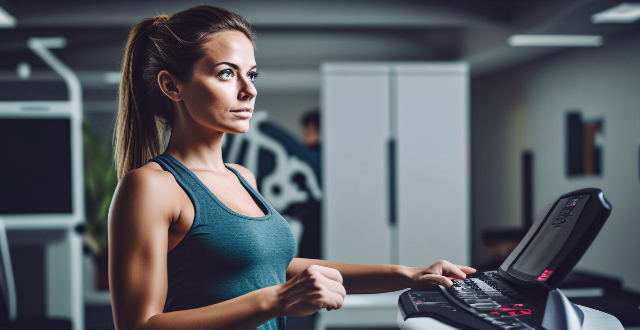
What role does kinetics play in the study of sports biomechanics ?
Kinetics is a key aspect of sports biomechanics, focusing on forces and motions in physical activity. It aids in understanding how athletes generate power, control movements, and enhance performance. Key points include force analysis (internal and external), energy considerations (potential, kinetic, work, and power), movement efficiency (mechanical advantage, joint reaction forces, ground reaction forces), injury prevention and rehabilitation (overuse and traumatic injuries, rehab programs), and performance optimization (technique analysis, equipment design, training methods). Overall, kinetics helps coaches, athletes, and researchers make informed decisions about training, equipment, and technique to achieve safe and effective goals.

What is sports biomechanics and how does it apply to athletic performance ?
Sports biomechanics is a subdiscipline that applies mechanics principles to study human movement in sports and exercise. It focuses on how forces and motion affect the body during physical activity, combining knowledge from physics, biology, engineering, and other areas for understanding and improving athletic performance. Key concepts include kinematics, kinetics, and dynamics. Applications of sports biomechanics include injury prevention through gait analysis and movement optimization; technique improvement via motion analysis and force plates; equipment design considering ergonomics and material science; training programs that incorporate resistance, flexibility, and stability training; performance analysis using data analysis and feedback systems; and recovery strategies like physical therapy and rest-activity balance.

In what ways can technology be utilized to enhance sports biomechanics analysis ?
Technology has revolutionized sports biomechanics analysis, providing new tools and methods for coaches, athletes, and researchers. Video analysis software allows frame-by-frame review of performances, wearable technology provides real-time data on an athlete's physiology, force plates measure ground reaction forces, motion capture systems track movements in three dimensions, and computer simulation modeling creates virtual models of an athlete's movements. These technologies have made it easier than ever before to collect and analyze data on an athlete's performance, leading to improved training programs, injury prevention, and overall performance optimization.
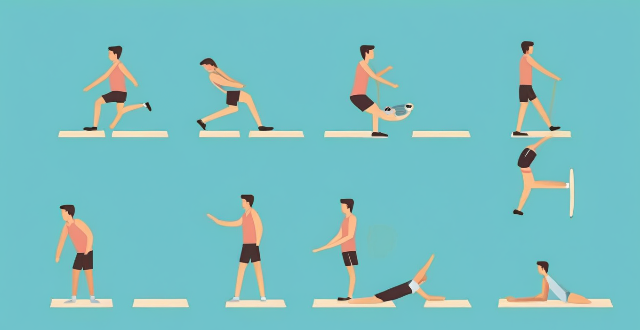
How do force vectors influence an athlete's movement in sports biomechanics ?
Force vectors play a crucial role in sports biomechanics. The magnitude and direction of force vectors determine an athlete's acceleration, deceleration, and direction of motion. There are several types of force vectors, including internal, external, contact, frictional, and elastic forces. Understanding how these force vectors influence an athlete's movement is essential for improving performance and preventing injuries in sports. Coaches and athletes can use this knowledge to optimize their training programs and techniques.
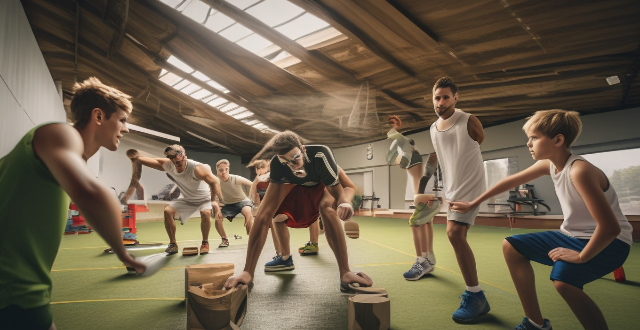
How does sports biomechanics address the unique challenges faced by athletes with disabilities ?
Sports biomechanics plays a crucial role in addressing the unique challenges faced by athletes with disabilities. It helps optimize their performance, enhance their training, and improve their overall well-being through customized equipment design, gait analysis and rehabilitation, sport-specific technique optimization, inclusive sports development, and education and advocacy efforts.

How can biomechanics help athletes optimize their performance ?
Biomechanics aids athletes in optimizing performance through improved technique, enhanced training methods, and injury prevention. It involves analyzing movement patterns, optimizing coordination, creating customized training programs, integrating technology, identifying risk factors for injuries, and providing rehabilitation support. Mental aspects are also addressed through cognitive strategies and feedback mechanisms. Overall, biomechanics offers a multifaceted approach to help athletes reach their peak potential safely and effectively.
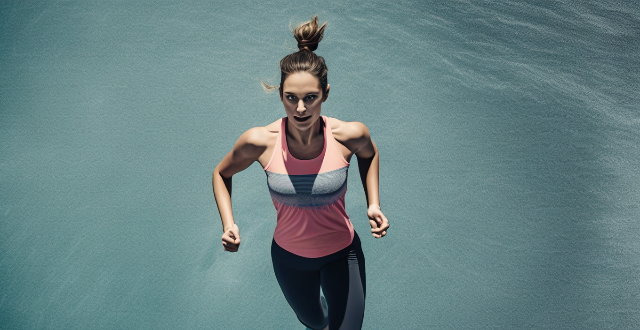
How does AI technology help with injury prevention in sports ?
AI technology is revolutionizing sports injury prevention by providing valuable insights into an athlete's physical condition, performance, and risk factors. Through data analysis, real-time monitoring, biomechanical analysis, recovery support, and injury surveillance, AI technology helps coaches, athletes, and medical professionals take proactive steps to prevent injuries and promote safer sports environments.

How can coaches use sports biomechanics to optimize training programs for their athletes ?
How coaches can use sports biomechanics to optimize training programs for their athletes, including improved technique, injury prevention, and enhanced performance. Steps to integrate sports biomechanics into training programs include assessing the athlete's baseline performance, analyzing their technique, designing a customized training program, monitoring progress and making adjustments, and incorporating technology into training sessions. Examples of how sports biomechanics can optimize training programs include strength training, running mechanics, and swimming technique.

In what ways do factors like body composition and flexibility affect sports biomechanics ?
In sports biomechanics, body composition and flexibility are crucial factors affecting performance. Increased muscle mass and a high strength-to-weight ratio enhance power in weightlifting and sprinting. A lower fat percentage improves aerodynamics and reduces energy expenditure in endurance activities. Higher bone density offers better support in impact-heavy sports. Greater flexibility increases the range of motion, preventing injuries and improving efficiency in rapid movements. Optimal body composition and flexibility can significantly improve an athlete's performance and reduce injury risk.
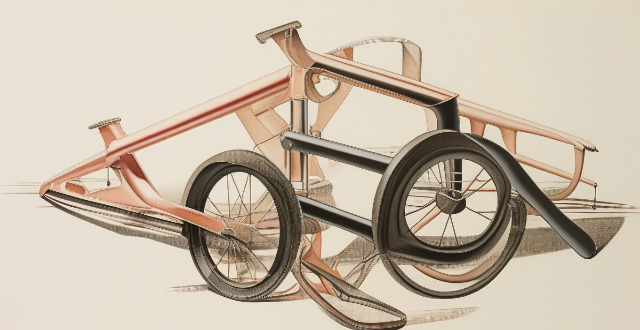
How does understanding joint mechanics contribute to improving athletic performance through sports biomechanics ?
Understanding joint mechanics is crucial for improving athletic performance in sports biomechanics. By optimizing movement patterns, preventing injuries, enhancing force production, and improving stability, athletes can achieve greater success in their chosen sports. Sports biomechanists analyze an athlete's joint mechanics to develop targeted training programs that improve joint function and overall performance. Advances in sports technology provide real-time feedback on joint mechanics during training and competition, allowing athletes to fine-tune their technique and make adjustments to their training program as needed.
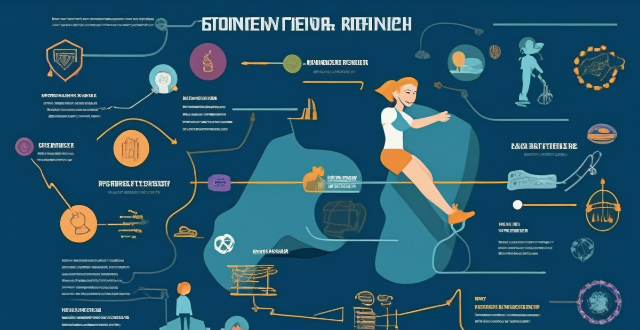
How can sports research and development help prevent injuries ?
Sports research and development can help prevent injuries by understanding injury mechanisms, developing prevention strategies, and utilizing technology and education. Biomechanics studies and epidemiological research provide insights into how forces affect the body during physical activity and identify common factors that contribute to injuries. Based on these findings, sports scientists can design training programs that target specific areas of the body, improving strength, flexibility, and endurance. Technology and equipment advancements also play a role in protecting athletes from injury. Educating coaches, athletes, and parents about proper technique and safe training practices is essential for creating a culture of safety. Overall, sports research and development are crucial for minimizing the risk of harm and promoting a safer environment for all participants.
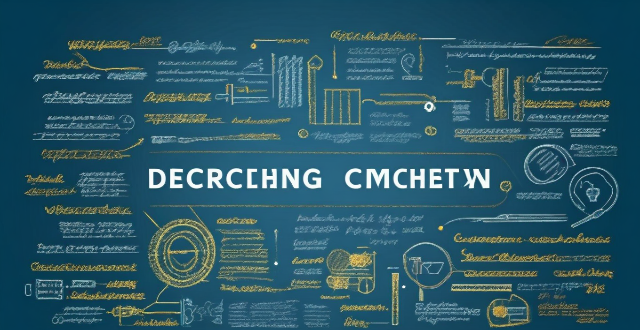
What are some emerging fields in sports research and development ?
The text discusses the emerging fields in sports research and development, highlighting five main areas: wearable technology and data analytics, virtual reality and augmented reality training, sports psychology and mental health support, nutrition science and gastrointestinal health, and biomechanics and injury prevention. Each section provides a brief overview of the field's benefits and potential impact on improving athletic performance, preventing injuries, and promoting overall well-being.

How do the principles of sports biomechanics differ between individual and team sports ?
This text discusses the principles of sports biomechanics in individual and team sports. It highlights the differences in kinematics, kinetics, and coordination between the two types of sports. In individual sports, there is a focus on precision, technique optimization, and personal performance, while team sports emphasize strategic interactions, group coordination, and adaptability to complex game situations. The text concludes by emphasizing the importance of understanding these distinctions for coaches and athletes to tailor their training approaches to best suit the specific demands of their chosen sport.

What is the latest news on LeBron James' injury ?
LeBron James, the Los Angeles Lakers' star player, suffered a high ankle sprain on his right leg during a game against the Atlanta Hawks. The recovery timeline for this injury varies, but he is expected to miss at least a few games as he undergoes treatment and rehabilitation. The Lakers will need to adjust their strategy in his absence and rely on other players to maintain their performance.

How can I prevent further injury while recovering from a sports injury ?
Recovering from a sports injury can be tough, but taking the right steps can prevent further harm. Here's how: 1. **Rest and Ice**: Rest to allow healing; apply ice to reduce swelling and pain. 2. **Compression and Elevation**: Use compression to reduce swelling and elevate the injured area above heart level. 3. **Gradual Return to Activity**: Work with a physical therapist and listen to your body as you gradually regain strength and mobility. 4. **Proper Gear and Technique**: Ensure you have the right gear and use proper form to prevent future injuries. 5. **Stay Hydrated and Nourished**: Drink plenty of water and eat a balanced diet to support your body's healing process.
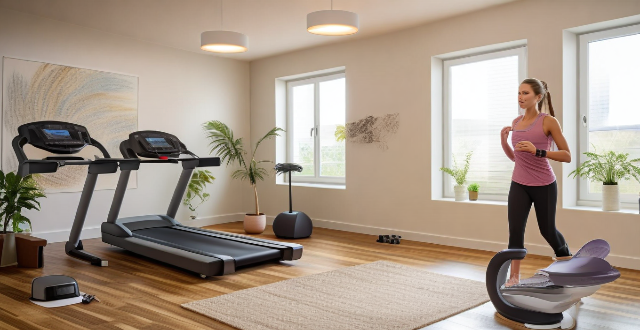
Can physical therapy help with sports injury recovery ?
Physical therapy is beneficial for sports injury recovery, addressPhysical therapy is beneficial for sports injury recovery, address restoration, injury prevention, and addressing pain management, function restoration, injury prevention, and supporting a safe return to activity. It involves assessment, diagnosis, manual therapy, range of motion exercises, strengthening exercises, stretching, balance training, functional training, gradual increase in activity, and education on injury prevention and home exercise programs.

What role does nutrition play in sports injury recovery ?
Nutrition plays a crucial role in sports injury recovery by providing the body with essential nutrients for tissue repair and growth. Protein, vitamins, minerals, and fluids are all important for healing, and proper nutrition can help speed up the process. In addition to nutrition, other factors such as rest, stress management, and physical therapy also play a role in sports injury recovery.

How does smart sportswear help in injury prevention ?
Smart sportswear is revolutionizing the way athletes and fitness enthusiasts approach their workouts by providing real-time feedback on their performance and body metrics. This technology not only enhances athletic performance but also plays a crucial role in injury prevention. Below are several ways smart sportswear contributes to reducing the risk of injuries: Monitoring biometric data, providing feedback in real-time, tracking progress over time, enhancing warm-up and cool-down routines, alerting on environmental factors, and promoting consistency and habit formation.

How do I know if I have a sports injury ?
Sports injuries can occur during physical activities or sports, and it is important to recognize the signs and symptoms to ensure proper treatment. Common symptoms include pain, swelling, stiffness, weakness, and instability. There are various types of sports injuries, such as sprains, strains, fractures, contusions, and dislocations. Seeking medical attention for a sports injury is essential to promote healing and prevent further damage. Treatment may include rest, ice, compression, elevation (RICE), physical therapy, medication, or surgery.

How does data analysis contribute to injury prevention in sports ?
Data analysis is a powerful tool for preventing injuries in sports. By identifying risk factors, developing prevention strategies, implementing surveillance systems, evaluating intervention effectiveness, and educating athletes and coaches, data-driven approaches can significantly reduce the likelihood of injuries. This not only protects athletes' health but also improves their performance.

How does sports psychology contribute to injury recovery and rehabilitation ?
Sports psychology can contribute to injury recovery and rehabilitation by helping athletes cope with psychological challenges, develop confidence and self-belief, establish good habits and routines, and adjust to life after injury. Incorporating sports psychology into an athlete's rehabilitation program can lead to better results and quicker recovery.

How can I avoid injury after a high-intensity workout
To avoid injury after a high-intensity workout, it is important to warm up properly, stretch, use proper form, take breaks, stay hydrated, and wear appropriate clothing. These tips will help reduce the risk of injury and allow you to continue enjoying the benefits of high-intensity workouts.
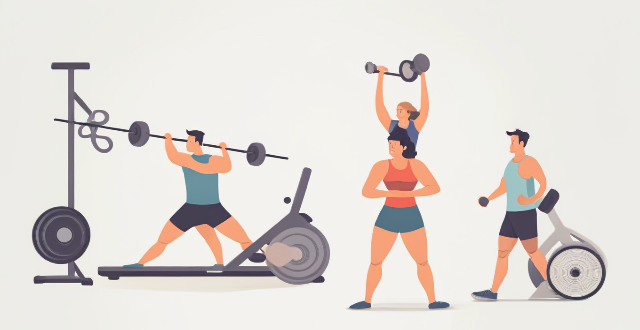
What are the best exercises for recovering from a sports injury ?
Recovering from a sports injury requires a combination of exercises that focus on flexibility, strength, cardiovascular fitness, stretching, and balance/coordination. Range of motion exercises help maintain joint flexibility, while strengthening exercises build muscle strength around the injured area. Cardiovascular exercises improve circulation and promote healing, while stretching exercises reduce stiffness and improve flexibility. Balance and coordination exercises improve stability and prevent future injuries. Incorporating these exercises into your rehabilitation program can speed up recovery and return to sport. It is important to consult with a physical therapist or healthcare professional before starting any new exercise program.

How can sports medicine help athletes recover from surgery or injury ?
**Sports Medicine: Aiding Athletes in Recovery from Surgery or Injury** The field of sports medicine plays a critical role in helping athletes recover from injuries and surgeries. It involves a multifaceted approach that includes pre-operative management, post-operative care, rehabilitation programs, and facilitating a safe return to sport. Professionals in this area assess the injury, prepare the athlete for surgery, manage pain, provide physical therapy, offer nutritional and psychological support, and create tailored rehabilitation programs focusing on functional training, strength building, flexibility, and endurance. The ultimate goal is to ensure the athlete's complete recovery and prevent future injuries.

How often should I visit a sports rehabilitation center after an injury ?
The frequency of visits to a sports rehabilitation center after an injury depends on factors like the severity of the injury, individual healing capacity, and recommended treatment plan. Major injuries may require daily sessions initially, while minor injuries might need weekly visits. Individual healing rates also play a role, with some needing more time and support. The treatment plan outlines the recommended visit frequency and necessary interventions. Regular progress tracking helps determine if adjustments are needed. It's crucial to work closely with healthcare professionals for an effective rehabilitation process.

In what ways can sports psychology aid in injury rehabilitation and recovery ?
Sports psychology aids in injury rehabilitation by managing emotions, developing a positive mindset, promoting healthy habits, and helping athletes return to their previous level of performance.

How important is rest in the recovery process of a sports injury ?
The Importance of Rest in the Recovery Process of a Sports Injury Rest is crucial for healing, preventing further injury, reducing pain, and supporting mental health during recovery. Tips for proper rest include following doctor's orders, creating a comfortable environment, staying hydrated and nourished, getting enough sleep, and staying active (but safely).
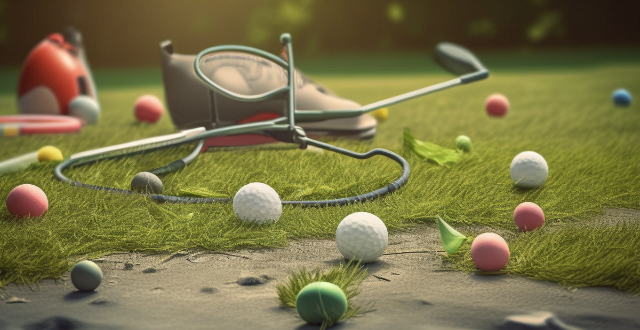
How long does it take to recover from a sports injury ?
Recovering from a sports injury varies based on the type and severity of the injury, individual factors such as age and overall health, and commitment to rehabilitation. Acute injuries occur suddenly, often due to a specific event or trauma, while overuse injuries develop over time from repetitive stress without adequate rest or recovery. Chronic injuries are ongoing conditions that may have started as acute or overuse injuries but have not healed properly. Recovery timelines vary depending on the injury's severity, with minor sprains and strains taking several days to a few weeks to heal with proper rest and care, moderate injuries requiring several weeks to months for recovery, often involving physical therapy, and severe injuries like major fractures or complete ligament tears taking months to over a year for full recovery, typically requiring surgery and extensive rehabilitation. Key factors affecting recovery include age, overall health, commitment to rehabilitation, rest, and professional care. Tips for supporting recovery include following professional advice, maintaining a healthy lifestyle, staying positive, and gradually returning to activity. Patience, persistence, and a proactive approach to rehabilitation are key to achieving the best possible outcome.